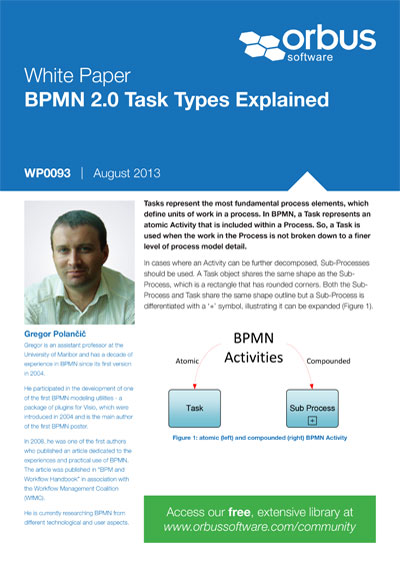A paper explaining BPMN 2.0 Task Types and their notation and uses using examples from the Orbus iServer BPMN Template.
Tasks represent the most fundamental process elements, which define units of work in a process. In BPMN, a Task represents an atomic Activity that is included within a Process. So, a Task is used when the work in the Process is not broken down to a finer level of process model detail.
In cases where an Activity can be further decomposed, Sub-Processes should be used. A Task object shares the same shape as the SubProcess, which is a rectangle that has rounded corners. Both the SubProcess and Task share the same shape outline but a Sub-Process is differentiated with a ‘+’ symbol, illustrating it can be expanded (Figure 1).
BPMN 2.0 [1] defines several types of Tasks, which are differentiated by their attributes, behaviours and performers. These Task’s specifics are graphically annotated with symbols within the Task element (Figure 2).
The top left corner of a Task element can include several different symbols which represent the Task type or the way a Task is performed. Generally, an end-user, an application, or both will perform the Task. The most common Task is an Abstract Task, which represents a Task with no specialized behaviour.
The bottom side of a Task element can include symbols which represent Task’s looping behaviour (normal looping, parallel multiple instance, and sequential multiple instance) as well as the graphical representation of a Compensation Task. A Task can also have a thick border, which would indicate a (calling) Global Task.
Please login to continue reading.
